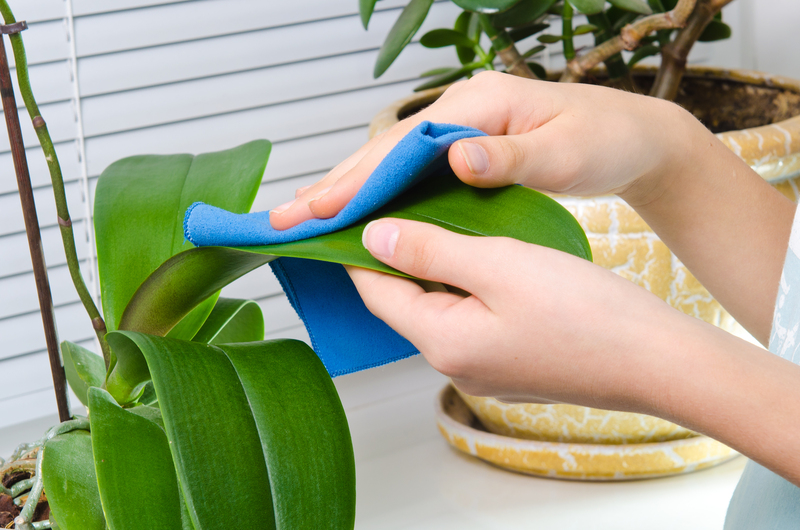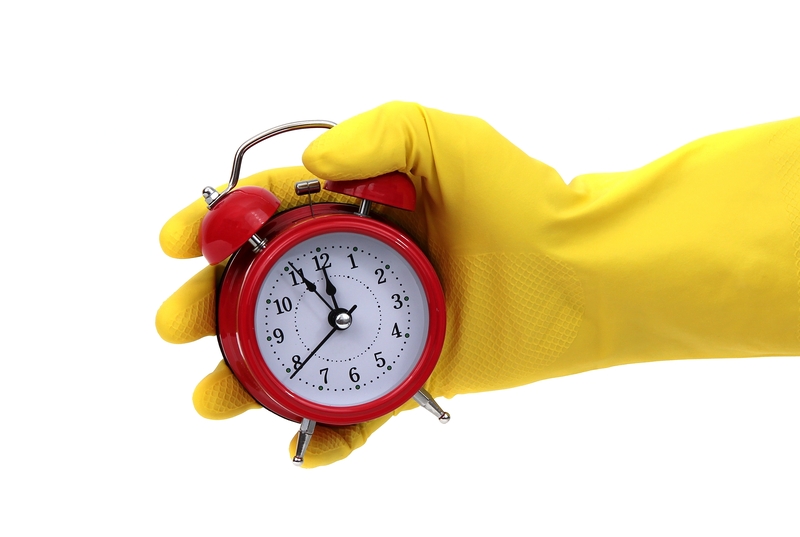Effective Techniques to Clean Burnt-on Stovetop Residue
Posted on 02/10/2025
Effective Techniques to Clean Burnt-on Stovetop Residue
Burnt-on residue can turn your sparkling stovetop into a stubborn eyesore and affect your kitchen hygiene. Whether your stovetop is gas, electric, glass or ceramic, tough stains and grease can be a real challenge. Fortunately, there are tried and tested methods for cleaning burnt-on stovetop residue efficiently. In this comprehensive guide, we will explore a variety of effective stovetop cleaning techniques to restore the shine to your kitchen appliance and keep it looking brand new.

Understanding Burnt-On Residue: Causes and Prevention
Before diving into removal techniques, it's helpful to know what causes burnt-on residue and how to minimize its occurrence. Cleaning burnt residue effectively often begins with understanding its composition.
What Causes Burnt-on Stovetop Residue?
- Spills and Overflows: Cooking sauces, soups, and oils frequently bubble over, especially during high heat.
- High cooking temperatures: Prolonged exposure to heat carbonizes food particles, making them hard to remove.
- Delayed cleaning: Allowing spills to cool and remain on the stovetop allows them to stick and harden.
Prevention Tips
- Wipe spills immediately with a damp cloth or paper towel.
- Use splatter guards and keep an eye on pots and pans during cooking.
- Regularly deep clean your stove to prevent buildup.
How to Clean Burnt-on Stovetop Residue: Step-by-Step Methods
The following sections outline multiple effective cleaning techniques to remove stubborn, burnt-on stove stains, each suited for different types of stovetops and severity of residue.
1. Basic Cleaning for Light Residue
For new or light stains, a quick clean can prevent further buildup:
- Allow stove to cool fully to avoid injury.
- Moisten a soft cloth with warm, soapy water.
- Gently wipe away residue using circular motions.
- Dry with a clean towel.
This approach is great for regular maintenance and prevents light stains from becoming stubborn grime.
2. Baking Soda and Vinegar Technique
This eco-friendly cleaning method is highly effective for moderate to tough burnt-on stains, especially on glass or ceramic stovetops.
- Sprinkle baking soda generously over the burnt areas.
- Spray or pour white vinegar over the baking soda. It will fizz, helping to loosen stuck debris.
- Let the mixture sit for 10-15 minutes to penetrate the residue.
- Use a non-abrasive sponge or soft brush to scrub gently in a circular motion.
- Wipe clean with a damp microfiber cloth and dry the surface.
Pro Tip: For extremely stubborn areas, cover the baking soda and vinegar mixture with a warm, damp towel and leave for 30 minutes before scrubbing.
3. Using a Razor Blade or Scraper
For glass stovetop cleaning, a razor blade or specialized scraper can aid in removing burnt-on residue without scratching the surface if used correctly.
- Ensure the stovetop is completely cool.
- Hold the razor blade or scraper at a 45-degree angle.
- Gently scrape off the burnt material, pushing away from you.
- Wipe away loosened residue with a damp cloth.
- Finish by cleaning with a ceramic stovetop cleaner or baking soda and vinegar mixture.
Warning: Only use this method on glass or ceramic stovetops and never on gas or electric coil burners.
4. Commercial Stovetop Cleaners and Degreasers
Heavy-duty burnt stains often require a specialized stovetop cleaning product or degreaser. These are designed for various stovetop surfaces and contain active ingredients to break down tough grease and carbon.
- Read and follow the manufacturer instructions carefully.
- Apply the cleaner to the affected area.
- Allow it to sit for the recommended time to dissolve stubborn residue.
- Wipe away with a clean, damp cloth.
- Buff dry with a towel to restore shine.
Tip: Choose non-abrasive formulas for glass, ceramic, or induction cooktops to avoid scratches.
5. Cleaning Gas Stove Burners and Grates
Gas stoves often develop burnt-on residue on grates and burners. Here is an effective technique to clean them:
- Remove the grates and burner covers once the stove has cooled.
- Soak them in hot, soapy water for 15-20 minutes.
- Scrub with a non-abrasive brush or scouring pad to remove remaining residue.
- For tough stains, create a paste of baking soda and water, apply to the area, and scrub after 15 minutes.
- Rinse thoroughly, dry completely, and reassemble the burners.
6. Lemon and Salt Scrub for Natural Cleaning
Harness the natural acidity of lemons for an all-natural burnt-on stove residue remover:
- Cut a lemon in half and sprinkle salt on the cut side.
- Use the lemon as a scrubber on the affected spots, squeezing lightly to release juice.
- Let it sit for 5-10 minutes.
- Wipe off residue with a damp cloth and buff dry.
This technique is ideal for those seeking chemical-free stovetop cleaning solutions.
Special Considerations for Different Stovetop Types
Glass and Ceramic Stovetops
- Always use non-abrasive cleaning agents and tools to avoid scratches.
- For burnt sugar or plastic, allow stovetop to cool and use a plastic scraper for gentle removal.
- Dedicated glass stovetop cleaners are great for polishing after residue removal.
Induction Cooktops
- Follow the manufacturer's instructions for cleaning to retain the induction surface's sensitivity.
- Use baking soda and vinegar sparingly and always with a soft sponge.
Gas and Electric Coil Stoves
- Always unplug electric stoves before cleaning.
- Remove coils and clean them separately; avoid immersing electrical components in water.
- Stovetop surfaces can be cleaned using baking soda, vinegar, or commercial degreasers.
Additional Tips for Effective Stovetop Cleaning
Do's
- Do clean up spills as soon as possible to reduce stubbornness.
- Do use microfiber or soft cloths to prevent scratches.
- Test new cleaning agents on a small, inconspicuous area first.
- Ventilate your kitchen when using strong cleaning products.
Don'ts
- Don't use steel wool or harsh abrasives on glass or ceramic surfaces.
- Don't use excessive water on electric stoves to prevent short circuits.
- Don't overapply commercial cleaners - more is not always better.
- Never scrape with sharp metal objects unless using an approved razor blade for glass stovetops.
Maintaining a Spotless Stovetop: Cleaning Frequency and Habits
Create a Cleaning Schedule
- Daily: Wipe the stovetop after each use with a soft, damp cloth to remove fresh spills.
- Weekly: Perform a deeper cleaning with baking soda and vinegar or a gentle stovetop cleaner.
- Monthly: Remove and deep clean burners, grates, and removable parts.
Quick Maintenance Hacks
- Keep a spray bottle filled with diluted vinegar handy for daily cleaning.
- Use a splatter screen to reduce the frequency of messy overflows.
- Lay heat-safe liners or covers on stove surfaces for easy removal and cleaning.

Frequently Asked Questions About Burnt-on Stovetop Residue Cleaning
Q1: What is the safest way to clean burnt residue from a glass stove?
A mixture of baking soda and vinegar, applied with a soft sponge and rinsed with clean water, is a safe and effective cleaning technique for glass. A razor blade scraper may also be used gently for the toughest stains.
Q2: Can I use oven cleaner on my stovetop?
Oven cleaners are often too harsh for most stovetops, especially glass and ceramic. It is best to stick to stovetop-specific cleaning agents or natural solutions like baking soda and vinegar.
Q3: What household items can be used for cleaning burnt stovetops?
Common household items such as baking soda, vinegar, lemon, salt, dish soap, and microfiber cloths work wonders for stove cleaning. Avoid using bleach or ammonia unless specified as safe for your stove type.
Q4: Does burnt-on residue affect stove performance?
Yes, accumulated residue can hinder heat transfer and efficiency, especially for gas burners. It may also lead to unpleasant smoke or odors. Regular cleaning is key for optimal stovetop performance.
Conclusion: The Key to a Gleaming Stovetop
In summary, removing burnt-on stovetop residue doesn't have to be an ordeal. Whether you opt for natural solutions like baking soda and vinegar, gentle scraping, or commercial cleaners, adopting these proven techniques will keep your stove radiant and your kitchen inviting. Remember, consistency is crucial--quickly tend to spills and schedule regular cleaning sessions for the best results. With these effective burnt-on residue removal methods, your stovetop will stay as dazzling as the day you brought it home!
Keep your cooktop spotless, efficient, and safe with these expert tips on effective stovetop cleaning. Your meals--and your kitchen--will thank you!





